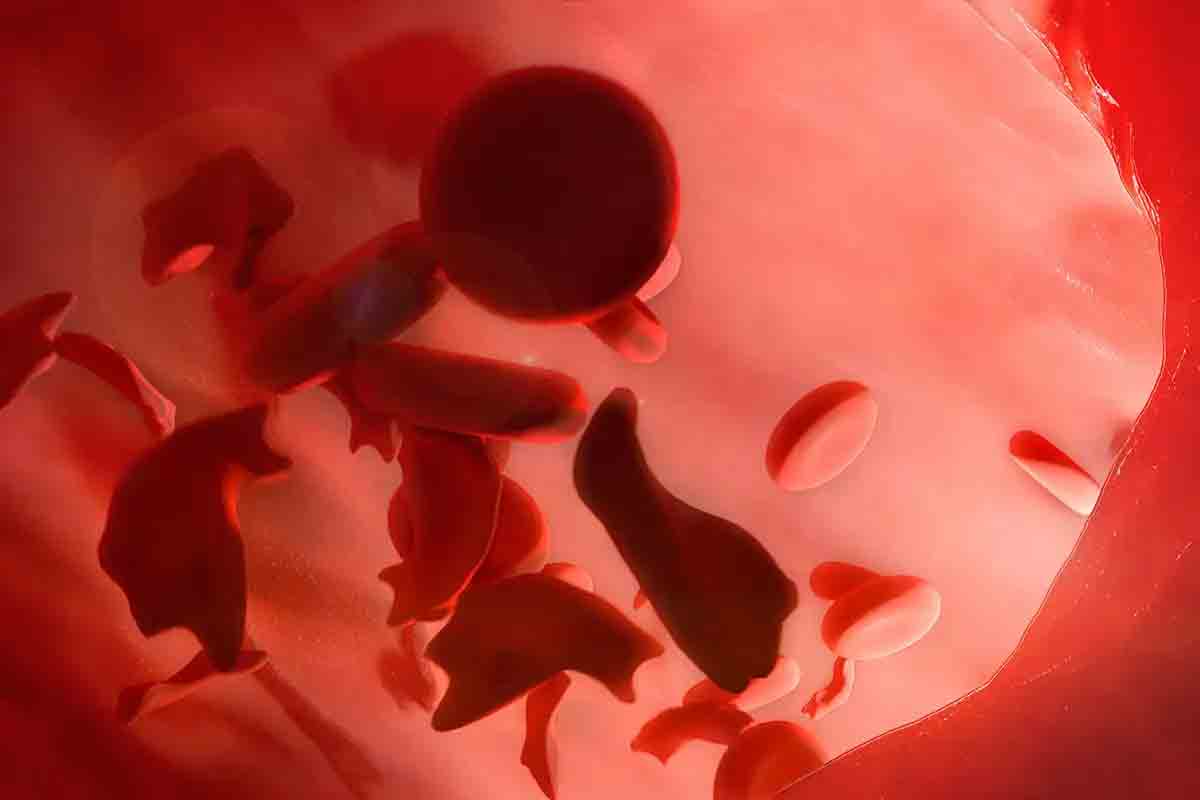Last Updated on November 26, 2025 by Bilal Hasdemir

Getting a diagnosis of squamous cell carcinoma in the lungs at stage 4 can change your life. We know how tough this is and want to help with care that’s both kind and based on science.
Lung cancer squamous cell carcinoma is a tough type of lung cancer. It needs special treatments. At Liv Hospital, we’re here to give you top-notch care, helping international patients through their fight against cancer.
It’s important to know about this condition for patients and their families. We want to give you the tools to face this tough time.
Key Takeaways
- Understanding the diagnosis and its implications
- Exploring treatment options for advanced lung cancer
- The importance of compassionate care in cancer treatment
- Liv Hospital’s approach to treating squamous cell carcinoma
- Support services available for international patients
Understanding Stage 4 Squamous Cell Carcinoma Lung
It’s key to grasp the details of Stage 4 squamous cell carcinoma lung cancer. This stage is the most advanced, with cancer spreading beyond the lungs to other parts of the body.
Definition and Classification
Squamous cell carcinoma is a non-small cell lung cancer (NSCLC) type. It starts in squamous cells, which line the airways in the lungs. Stage 4 means the cancer has spread to distant organs like the brain, bones, or liver.
How Stage 4 Differs from Earlier Stages
The main difference between Stage 4 and earlier stages is the cancer’s spread. In earlier stages (I-III), the cancer is more contained, allowing for surgery. But, Stage 4 cancer has spread, making treatments like chemotherapy and targeted therapy more common.
Prevalence and Demographics
Squamous cell carcinoma makes up about 25-30% of NSCLC cases. Stage 4 is more common in certain groups. For example, men and smokers are at higher risk. The table below shows who is most affected by squamous cell lung carcinoma.
| Demographic Factor | Characteristics | Prevalence |
|---|---|---|
| Gender | Male | Higher risk |
| Smoking History | Current or former smokers | Increased prevalence |
| Age | Typically older adults | Peak incidence in 65-75 years age group |
Knowing these details helps us understand Stage 4 squamous cell carcinoma lung cancer better. It also highlights the importance of personalized treatment plans.
The Biology of Squamous Cell Carcinoma in the Lungs
Squamous cell carcinoma of the lungs is a serious and aggressive lung cancer. It needs a deep understanding of its biology. This disease has unique cellular and genetic features.
Cell Origin and Development
Squamous cell lung cancer starts from squamous cells in the airway lining. These cells protect the lungs. The disease develops through genetic changes that cause cells to grow out of control.
Research shows that long non-coding RNAs, like LINC01354, can affect cancer growth. They can sometimes stop tumors from growing.
Genetic and Molecular Characteristics
The genetics and molecules of squamous cell carcinoma are unique. For example, TP53 gene mutations are common. These mutations make the cancer aggressive. Certain molecular markers help diagnose and differentiate squamous cell carcinoma from other lung cancers.
Knowing these genetic and molecular traits is key for developing targeted treatments. Advances in genomic profiling help tailor treatments to each patient.
Comparison to Other Lung Cancer Types
Squamous cell lung cancer is a major subtype of non-small cell lung cancer (NSCLC). It differs from adenocarcinoma and large cell carcinoma. Squamous cell carcinoma is more common in smokers and is often found in the center of the lung.
Key differences include:
- Cellular origin and morphology
- Genetic mutation profiles
- Response to targeted therapies
- Prognostic factors
Understanding these differences helps tailor treatments. This improves patient outcomes.
Risk Factors and Causes
Stage 4 squamous cell carcinoma lung comes from genetic, environmental, and lifestyle factors. Knowing these risks helps spot high-risk people and might stop the disease.
Smoking and Tobacco Use
Smoking and tobacco use are big risks for squamous cell carcinoma of the lung. Cigarette smoke has many harmful chemicals that harm lung cells’ DNA, causing cancer. The risk grows with how long and how much you smoke.
- Smokers face a much higher risk of lung cancer than non-smokers.
- The risk goes up with more cigarettes and years of smoking.
- Quitting smoking lowers the risk, but it’s always higher than for non-smokers.
Environmental and Occupational Exposures
Some environmental and job hazards raise the risk of squamous cell carcinoma of the lung. Asbestos and radon are known dangers that can cause lung cancer, mainly in smokers.
- Asbestos is common in construction and mining jobs.
- Radon is a gas found in homes and buildings.
- Exposure to arsenic and chromium at work also raises the risk.
Genetic Predisposition
Genetics also play a part in squamous cell carcinoma of the lung. People with a family history of lung cancer might be at higher risk. Genetic mutations, like those in the EGFR gene, can change the risk and how the cancer grows.
- Having a family history of lung cancer increases your risk.
- Certain genetic changes can make lung cancer more likely or aggressive.
- Genetic tests might be suggested for those with a strong family history.
Knowing these risk factors and causes helps prevent and catch Stage 4 squamous cell carcinoma lung early. By tackling these risks, people can lower their chance of getting this serious lung cancer.
Recognizing Symptoms of Stage 4 Squamous Cell Carcinoma Lung
When squamous cell carcinoma lung reaches Stage 4, patients notice specific symptoms. It’s key to spot these signs early. This helps manage the disease better and improves life quality.
Primary Lung Symptoms
Primary symptoms come from the tumor in the lungs. Common signs include:
- Persistent cough, which may be dry or produce mucus
- Chest pain that worsens with deep breathing, coughing, or laughing
- Hemoptysis, or coughing up blood or rust-colored mucus
- Shortness of breath or difficulty breathing
These symptoms can greatly affect daily life. Seek medical help if these symptoms last or get worse.
Metastatic Symptoms
Stage 4 squamous cell carcinoma lung can spread to other parts of the body. Symptoms vary based on where the cancer spreads:
- Bone pain or fractures if the cancer has spread to the bones
- Headaches, seizures, or weakness in the limbs if it has spread to the brain
- Jaundice or abdominal pain if it has spread to the liver
Metastatic symptoms can be tough to manage. But, treatments can help ease them.
Systemic Symptoms
Systemic symptoms affect the whole body. Stage 4 squamous cell carcinoma lung patients may feel:
- Unexplained weight loss
- Fatigue or feeling weak
- Loss of appetite
As one expert says, “Systemic symptoms can really affect a patient’s quality of life. It’s vital to have a full care plan.” Treating these symptoms often needs a team effort, including palliative care.
“The presence of systemic symptoms in Stage 4 lung cancer patients shows the need for care that looks at the whole person, not just the tumor.”
Understanding and recognizing Stage 4 squamous cell carcinoma lung symptoms is important. This way, patients and doctors can work together to find the best ways to manage the disease.
Diagnosis and Staging Process
Diagnosing Stage 4 squamous cell carcinoma lung involves several key steps. We’ll explain how we determine the disease’s extent.
Imaging Studies
Imaging studies are vital for lung cancer diagnosis and staging. We use different imaging methods to see the tumor and check if it has spread.
Common Imaging Techniques:
- Computed Tomography (CT) scans
- Positron Emission Tomography (PET) scans
- Magnetic Resonance Imaging (MRI)
These studies help us understand the tumor’s size, location, and if it has spread to other areas.
Biopsy Procedures
A biopsy is key to confirming squamous cell carcinoma. We get tissue samples through different methods.
Biopsy Methods:
| Method | Description |
|---|---|
| Needle Biopsy | A minimally invasive procedure using a needle to collect tissue |
| Bronchoscopy | A flexible tube with a camera is used to visualize the airways and collect samples |
| Surgical Biopsy | A more invasive procedure to obtain tissue samples |
Staging Criteria for Stage 4
Staging is important for understanding the prognosis and treatment plan. Stage 4 squamous cell carcinoma lung means the cancer has spread to distant parts of the body.
Key Staging Criteria:
- Spread to distant lymph nodes
- Metastasis to other organs such as the brain, bones, or liver
Knowing these criteria helps us create a treatment plan that fits the individual’s needs.
Squamous Cell Lung Cancer vs. Small Cell Lung Cancer
Squamous cell lung cancer and small cell lung cancer are two different lung cancers. Squamous cell is a type of non-small cell lung cancer (NSCLC). Small cell lung cancer (SCLC) is very aggressive and has unique features.
Histological Differences
The main difference between squamous cell lung cancer and small cell lung cancer is how they look under a microscope. Squamous cell carcinoma has squamous cells with keratinization. On the other hand, small cell lung cancer has small, round cells with little cytoplasm and no clear nucleoli.
These differences are key for diagnosing and planning treatment. Doctors use biopsies and microscopic exams to tell these cancers apart.
Growth and Spread Patterns
Squamous cell lung cancer grows slower and stays in the lung longer. Small cell lung cancer grows fast and spreads quickly to other parts of the body like the brain and bones.
How fast these cancers grow affects their treatment. Small cell lung cancer is often treated as if it has spread because it does so quickly.
Treatment Response Variations
The way these cancers respond to treatment is different. Squamous cell carcinoma is treated with surgery, chemotherapy, and radiation. Small cell lung cancer is treated with chemotherapy and radiation, with surgery used less often.
New treatments like immunotherapy and targeted therapies are helping both types of lung cancer. But, the treatment plan depends on the patient’s cancer type, stage, and health.
Conventional Treatment Approaches for Stage 4 Squamous Cell Carcinoma Lung
Patients with Stage 4 squamous cell carcinoma lung have several treatment options. Each plan is made to fit the patient’s unique situation. This helps improve their quality of life.
Platinum-Based Chemotherapy Regimens
Platinum-based chemotherapy is key in treating Stage 4 squamous cell carcinoma lung. It combines drugs like cisplatin or carboplatin with others. The aim is to slow the disease, ease symptoms, and possibly extend life.
Some common regimens include:
- Cisplatin + gemcitabine
- Carboplatin + paclitaxel
- Cisplatin + docetaxel
These regimens are effective, but the choice depends on the patient’s health and past treatments.
Radiation Therapy Options
Radiation therapy is vital for Stage 4 squamous cell carcinoma lung. It helps control tumors and relieve symptoms. There are different types:
- External Beam Radiation Therapy (EBRT): Uses a machine outside the body to target the tumor.
- Stereotactic Body Radiation Therapy (SBRT): Focuses beams on specific areas to protect healthy tissues.
- Palliative Radiation Therapy: Focuses on easing symptoms like pain and breathing issues.
Surgical Considerations
Surgery is not always the first choice for Stage 4 squamous cell carcinoma lung. But, it might be considered for removing tumors in a few areas. This decision depends on the patient’s health and the disease’s extent.
We team up with experts to find the best treatment for each patient. We consider all options and the latest in lung cancer care.
Advanced Treatment Modalities
New breakthroughs in immunotherapy and targeted therapies are giving hope to those with Stage 4 squamous cell carcinoma lung. These new treatments aim to improve life quality and outcomes for those facing this tough condition.
Immunotherapy Breakthroughs
Immunotherapy is showing promise in treating non-small cell lung cancer (NSCLC), including squamous cell carcinoma. It uses the body’s immune system to fight cancer cells more effectively.
Checkpoint inhibitors, like pembrolizumab and nivolumab, are proving effective against NSCLC. They block proteins that stop the immune system from fighting cancer, helping the body fight back.
“The advent of immunotherapy has revolutionized the treatment landscape for lung cancer, opening up new ways to improve patient outcomes.”
Targeted Therapies
Targeted therapies aim at specific genetic mutations in cancer cells. For NSCLC, EGFR inhibitors and ALK inhibitors have been very effective in certain cases.
Recently, zongertinib has shown promise for patients with HER2-mutant NSCLC. It has the chance to improve outcomes for this group of patients.
| Targeted Therapy | Target Mutation | Clinical Benefit |
|---|---|---|
| EGFR inhibitors | EGFR mutations | Improved PFS and OS |
| ALK inhibitors | ALK rearrangements | Significant tumor shrinkage |
| Zongertinib | HER2 mutations | Promising activity in HER2-mutant NSCLC |
Combination Approaches
Using different treatments together is becoming more common for Stage 4 squamous cell carcinoma lung. Combining immunotherapy with chemotherapy or targeted therapy has shown promise in boosting treatment success.
These combinations aim to use the strengths of each therapy to get better results. Research is ongoing to find the best combinations and sequences of treatments.
As we keep exploring these advanced treatments, we’re hopeful they will lead to better survival rates and quality of life for those with Stage 4 squamous cell carcinoma lung.
Managing Metastatic Squamous Cell Carcinoma Lung
Managing metastatic squamous cell carcinoma lung needs a detailed plan. The cancer spreads to different parts of the body. So, treatments must focus on each site and the patient’s health.
Common Sites of Metastasis
The cancer often goes to the brain, bones, liver, and adrenal glands. Each place has its own challenges. For example, brain metastases need a special treatment plan.
Knowing where the cancer spreads is key to a good treatment plan. We must think about the symptoms and complications at these sites. This helps us give better care.
Organ-Specific Treatment Approaches
Treatment for metastatic squamous cell carcinoma lung changes with the metastasis site. For brain or spine metastases, stereotactic body radiation therapy (SBRT) is often used. Bone metastases might get palliative radiation therapy to ease pain and prevent fractures.
For those with metastatic disease, treatments must match the organ. We look at the patient’s health, how far the cancer has spread, and the tumor’s type. This helps us choose the best treatment.
Palliative Care Interventions
Palliative care is very important for metastatic squamous cell carcinoma lung. It aims to ease symptoms, pain, and stress from the disease. This care includes pain management, nutrition support, and counseling to improve life quality.
Adding palliative care to the treatment plan helps meet the complex needs of patients. It ensures they get all the support they need during their care journey.
Prognosis and Survival Rates
Stage 4 squamous cell carcinoma lung is a tough challenge. Many factors can change survival rates. It’s key for patients and families to understand these factors as they face advanced lung cancer.
Statistical Outlook
The outlook for Stage 4 squamous cell carcinoma lung is not good. Survival rates are lower than in earlier stages. Studies show a 5-year survival rate of about 10% for Stage 4 non-small cell lung cancer (NSCLC), which includes squamous cell carcinoma. But, it’s important to remember that each person’s outcome can be different.
| Stage | 5-Year Survival Rate | Median Survival Time |
|---|---|---|
| Stage 4 NSCLC | 10% | 8-12 months |
| Stage 3 NSCLC | 20-30% | 12-18 months |
| Stage 1 NSCLC | 60-80% | Not applicable |
Factors Affecting Prognosis
Several things can change the outlook for Stage 4 squamous cell carcinoma lung. These include:
- Performance Status: Patients who can do more tend to do better.
- Genetic Mutations: Certain genetic changes can affect how well treatments work and survival.
- Treatment Response: How well the cancer responds to treatment is very important for long-term results.
- Co-existing Health Conditions: Other serious health problems can make treatment harder and affect the outlook.
Quality of Life Considerations
While looking at the future is important, quality of life matters too. Palliative care is key in improving life for these patients. It helps manage symptoms, relieves pain, and offers support for the mind and spirit.
Healthcare providers can give full care by focusing on both the future and quality of life. This helps meet the complex needs of patients with Stage 4 squamous cell carcinoma lung.
Living with Stage 4 Squamous Cell Carcinoma Lung
Being diagnosed with Stage 4 squamous cell carcinoma lung cancer means you need a full care plan. This plan covers physical, nutritional, and emotional support. It’s about managing symptoms, eating right, and dealing with the emotional side of the disease.
Symptom Management
Managing symptoms is key to a better life with Stage 4 lung cancer. Symptoms like coughing, shortness of breath, and fatigue are common. It’s important to work with your doctor to make a plan just for you.
- Use medicines as told to help with symptoms.
- Try breathing exercises to help your lungs.
- Keep your living space comfortable to ease symptoms.
A top oncologist says, “Managing symptoms is more than just easing pain. It’s about making the patient feel better overall.”
“The goal of symptom management is to enable patients to live as fully and comfortably as possible despite their illness.”
Nutritional Support
Eating right is critical when you’re fighting cancer. Changes in appetite and taste are common. Focus on eating foods that are full of nutrients and drink plenty of water.
| Nutritional Element | Recommended Foods |
|---|---|
| Protein | Lean meats, fish, eggs, dairy products, legumes |
| Complex Carbohydrates | Whole grains, fruits, vegetables |
| Healthy Fats | Nuts, seeds, avocados, olive oil |
Talking to a dietitian or nutritionist is a good idea. They can help make a meal plan that’s right for you.
Psychological and Emotional Well-being
Dealing with Stage 4 lung cancer affects your mind and feelings. It’s important to get help from mental health experts, support groups, and loved ones. This can help with anxiety, depression, and stress.
Doing things that make you happy and relaxed can also help. One patient said, “Meditation and time with family have been key for me.”
By focusing on managing symptoms, eating well, and taking care of your mind, you can live better with Stage 4 squamous cell carcinoma lung cancer.
Conclusion
Stage 4 squamous cell carcinoma lung is a serious condition that needs a lot of care and support. It’s important to know about its biology, symptoms, and treatment options. This helps patients deal with their situation better.
We talked about the main points of stage 4 squamous cell carcinoma lung. This includes what it is, who’s at risk, its symptoms, how it’s diagnosed, and treatment choices. Treatments range from common ones like chemotherapy and radiation to newer options like immunotherapy and targeted therapies.
The outlook for stage 4 squamous cell carcinoma lung depends on several things. This includes the patient’s overall health and how well they respond to treatment. Getting the right care and support is key to managing the condition and improving life quality.
Knowing about stage 4 squamous cell carcinoma lung and its treatments helps patients and their families make better choices. This knowledge gives them the confidence to face the challenges of lung cancer treatment and prognosis.
FAQ
What is Stage 4 squamous cell carcinoma lung?
Stage 4 squamous cell carcinoma lung is a type of lung cancer. It has spread to distant parts of the body, like the brain, bones, or liver.
What are the symptoms of Stage 4 squamous cell carcinoma lung?
Symptoms include coughing and chest pain. You might also feel bone pain or have neurological issues. Weight loss and fatigue are common too.
How is Stage 4 squamous cell carcinoma lung diagnosed?
Doctors use CT scans and PET scans for imaging. They also do biopsies to confirm cancer cells. Staging criteria help determine how far the disease has spread.
What are the treatment options for Stage 4 squamous cell carcinoma lung?
Treatments include chemotherapy and radiation therapy. Immunotherapy and targeted therapies are also options. Sometimes, doctors use a combination of these approaches.
What is the prognosis for Stage 4 squamous cell carcinoma lung?
The prognosis depends on your health, how well you respond to treatment, and genetic factors. Generally, the five-year survival rate is about 10% for Stage 4 NSCLC.
How can patients manage symptoms and improve quality of life?
Managing symptoms involves strategies like nutritional support and maintaining emotional well-being. Palliative care can also help improve your quality of life by easing symptoms.
What is the difference between squamous cell lung cancer and small cell lung cancer?
Squamous cell lung cancer is a type of NSCLC. Small cell lung cancer is more aggressive and distinct. They differ in characteristics, growth patterns, and treatment responses.
Can Stage 4 squamous cell carcinoma lung be treated with surgery?
Surgery is usually not an option for Stage 4 squamous cell carcinoma lung. The cancer has spread too far. But, surgery might be considered in some cases.
What are the common sites of metastasis for squamous cell carcinoma lung?
Common sites include the brain, bones, liver, and adrenal glands. Treatment depends on the site and extent of metastasis.
How does immunotherapy work for Stage 4 squamous cell carcinoma lung?
Immunotherapy uses the body’s immune system to fight cancer cells. It has shown promise in treating Stage 4 squamous cell carcinoma lung, mainly in patients with specific genetic profiles.
Reference
National Cancer Institute (NCI). Non-Small Cell Lung Cancer Treatment (PDQ). https://www.cancer.gov/types/lung/patient/non-small-cell-lung-treatment-pdq
NCBI. Research. https://www.ncbi.nlm.nih.gov/books/NBK564510/
Canadian Cancer Society (CCS). Treatment for stage 4 non-small cell lung cancer. https://cancer.ca/en/cancer-information/cancer-types/lung/treatment/stage-4








